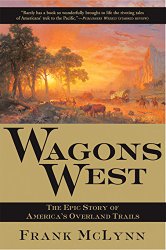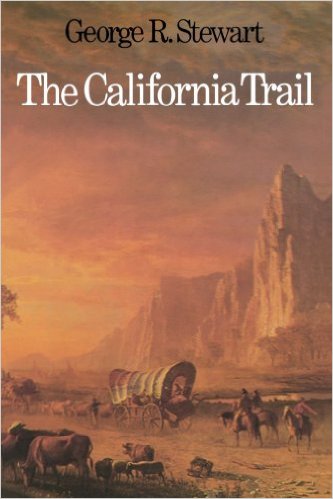A month or two ago I was working on the cover for my novel about the Oregon Trail. I found a wonderful painting by Albert Bierstadt, called “The Oregon Trail.” It is in the public domain and the beautiful image evokes the era of my novel. It works well cropped for the front cover for the ebook, and it works as a wrap-around for front and back covers for the paperback. So I mocked up a book cover using this painting.
Then I did more research and learned that Bierstadt’s painting has been used on seven or eight book covers already. Maybe more; I quit looking. Most of the books using this image were non-fiction, and wouldn’t compete with mine, but a couple of novels used it also. As a result, I ruled it out as my book cover.
But along the way, I checked out a couple of the books using Bierstadt’s painting on the cover to see what they were about. And I found a treasure trove of interesting information.
“I’m trying to polish my novel, not still research!” I whined to myself. “I don’t need more information.”
Still, because I discovered the information, I will use it here, if not in my novel (and a few odd facts will sneak their way into the book, I promise).
 Wagons West, by Frank McLynn (2002), is a wonderful account of the annual wagon companies to Oregon and California in the 1840s. His chapter on 1847 focused on the Mormon emigration to Salt Lake, which was not too relevant to my novel. But most chapters quoted from diaries and letters that provided details I can add to add verisimilitude to my novel.
Wagons West, by Frank McLynn (2002), is a wonderful account of the annual wagon companies to Oregon and California in the 1840s. His chapter on 1847 focused on the Mormon emigration to Salt Lake, which was not too relevant to my novel. But most chapters quoted from diaries and letters that provided details I can add to add verisimilitude to my novel.
Almost every detail I concocted in my novel—secret stashes of alcohol, for example—actually happened somewhere in history. As a result, I’m not too worried about my novel being unrealistic. McLynn’s book showed me that even in the 1840s, truth was stranger than fiction.
McLynn also quotes Emerson Hough as follows:
“The chief figure of the American West . . . Is not the long-haired, fringed-legged man riding a raw-boned pony, but the gaunt and sad-faced woman sitting on the front seat of the wagon, following her lord where he might lead . . . That was the great romance of all America—the woman in the sunbonnet.”
There are many women in sunbonnets, often sad-faced, in my novel. Each one, like the woman James Clyman wrote of,
“. . . showed herself worthy of the bravest undaunted pioneer of the West, for after having kneaded her dough, she watched and nursed the fire and held an umbrella over the fire and her skillet with the greatest composure for near two hours and baked bread enough to give us a very plentiful supper.”
 The California Trail, by George R. Stewart (1962), focuses on the wagons that traveled to California before the Gold Rush. The paths of the Oregon and California trails were the same until they reached Fort Hall, but Stewart’s book provided less information for me than McLynn’s. Still, Stewart’s book provided a detailed description of how oxen and mules actually pulled the wagons up mountains and across streams, which I had only imagined prior to reading his account. (I wasn’t too far off.)
The California Trail, by George R. Stewart (1962), focuses on the wagons that traveled to California before the Gold Rush. The paths of the Oregon and California trails were the same until they reached Fort Hall, but Stewart’s book provided less information for me than McLynn’s. Still, Stewart’s book provided a detailed description of how oxen and mules actually pulled the wagons up mountains and across streams, which I had only imagined prior to reading his account. (I wasn’t too far off.)
These books were fascinating discoveries, brought on by my search for a book cover. I’m still searching for the perfect image for my cover, though I have a very good option in mind. Once I land on the final cover, I’ll share it on this blog.
When have you thought you were done with a project, only to find you had much more to do?

